- Home
- Antonia Fraser
Gunpowder Plots Page 10
Gunpowder Plots Read online
Page 10
On 4 September the Plot took a more public turn when Oates and Tonge swore on oath before Sir Edmund Berry Godfrey the truth of their discovery: by now the charge had expanded to eighty-one articles and implicated not only Jesuits, but Benedictines, Dominicans and many Catholic peers. In late September Oates and Tonge presented their evidence to the Privy Council: both men were masters at manipulating circumstantial details to paint a plausible account. The turning point came on the night of 12/13 October when Sir Edmund Berry Godfrey was murdered. The coroner’s report put his death down to the ‘papists’ who had presumably murdered him in an attempt to cover up the Plot. This sparked off mass hysteria around the country similar to the days of November 1641 in the aftermath of the Irish rebellion. Sir Thomas Player expressed the fears of many when he commented that ‘he did not know but the next morning they might all rise with their throats cut’. To this day the murderers of Sir Edmund have not been identified; conspiracy theories still abound.
Rumours of risings in Ireland, Scotland and Wales were rife. Some claimed that 20,000 Irish troopers had been dispatched to slaughter all Protestants. The Commons organized committees of investigation: on 1 November they helped to fuel the fears by giving the Plot official credence in both Houses (without any opposition at all). There was, as their resolution read, ‘and still is, a damnable and hellish Plot, contrived and carried on by the Popish recusants, for the assassinating and murdering of the King, and for the subverting of the Government, and rooting out and destroying the Protestant religion’. The fact that a Frenchman was discovered near to the Commons with stores of gunpowder underscored the threat (the fact that he was a legitimate firework-maker was ignored). Anti-Catholic measures were invoked. All Catholics were relieved of political office and banished five miles from London. There was a sharp increase in the prosecution of local Catholics. There were lynchings. Outspoken men were executed (one minor figure had, rather foolishly, while drunk, shouted out ‘the King is a great heretic, I would kill him myself’). In the summer of 1679 some nineteen innocent priests were executed. Importantly, much of the original propaganda of the early 1640s describing the earlier popish conspiracies was reprinted. Popular newspapers like the Weekly Advice fed the lower orders with fresh revelations and anti-papal narratives.
The consequences of the Plot were not, however, restricted to popular hysteria and increased persecution of innocent papists: it sparked off a massive political crisis about the nature of monarchical government and the succession. As early as November 1678 both Houses pleaded with Charles to remove the duke ‘from his person and counsels’. By March 1679 James was exiled from England at his brother’s request. The next immediate casualty was the earl of Danby, implicated in secret dealings with Louis XIV. Danby was accused of not only collaborating with Louis but also trying to cover up the plot. In order to save his leading minister from impeachment (and also the consequent exposure of his own duplicity), Charles dissolved the Cavalier Parliament in January 1679. This dissolution ushered in two years of unprecedented political conflict focused on the business of electioneering for a new Parliament.
As the Plot became a political reality in the storm of anti-Catholic hysteria, the political nation turned upon James, and ultimately upon the prerogatives of the monarchy itself. Electioneering for the new Parliament was furious and fundamental. Fear of Catholic conspiracy, of the standing army, of Danby’s management and of the often brutal persecution of true Protestants became the central issue of the campaigns in the localities. The new Parliament was purged of the Cavalier interest (only about 30 out of the 500-odd MPs were Anglican Royalists). All those who had been ‘managed’ by Danby were rejected. Having impeached Danby, the first Exclusion Parliament set about resolving the problem of a Catholic successor. In May 1679 they brought in a bill to exclude James from the crown: if James persisted in promoting his claim to the throne, ‘he shall be adjudged guilty of high treason, and shall suffer the pains penalties and forfeitures as in cases of high treason’. If James returned to England uninvited he was again to be charged with treason: it was legitimate ‘in case of resistance to fight, and him… by force to subdue’.
Charles had tried to neutralize the Exclusionist platform by proposing a series of limitations upon the succession of a Catholic king: to preserve the Protestantism of the Church of England all ecclesiastical offices and promotions would be without the king’s remit; no papist was to be allowed to sit in either House of Parliament; no papist was to hold any political office; and lastly, all Lord Lieutenants and officers in the navy were to be appointed by Parliament. Those opposed to James feared that such arrangements could not bind a corrupt king, and Charles II was forced to prorogue and dissolve Parliament before the Bill of Exclusion was confirmed. From this moment until the prorogation of the Oxford Parliament in 1681 England faced its greatest crisis since the 1640s. Hopes that a more moderate Parliament might come to a compromise over the succession were dashed in October 1679 when the new MPs displayed even more rabid anti-popery: Charles responded by insisting that the recently elected Commons would not actually be permitted to sit until October or November of the following year.
Meanwhile, those who opposed the succession of James (known as the Whig Party) set about appealing to the political nation: exploiting the fear of popery was to be one of their most powerful weapons. In London and the provinces massive petitioning campaigns were organized. The Exclusionists, men who followed the more radical Whigs like Shaftesbury and the Republican Algernon Sidney, turned to extra-parliamentary means to focus their attack upon James and the ‘popery’ of the Stuart court, just as Pym had in the early 1640s. Exclusionists explicitly appealed to the middling people. As well as organizing petitions against James and popery, public demonstrations and marches – massive displays of anti-Catholic feeling – were evident in the infamous Pope-burning processions, organized by groups like the radical Green Ribbon Club in London. Radical Whigs agitated among the apprentices of London.
Elections for local parish offices became the focus of political conflict, since Parliament had been prorogued. Against this background there were yet further revelations: at one point it was suggested that James actually intended to kill Charles himself. The Oxford Parliament was to be a turning point. The Whig mobilization of the people of London and the counties was considered by many Anglican gentry to be bringing England back to the days of popular agitation of the 1640s and the threat of a world turned upside down. Royalists and Anglicans, learning the lessons of the 1640s, did not allow the Whigs to dominate popular politics. Throughout 1679–81, as the Whigs organized petitions in favour of exclusion, Anglican Tories organized rival petitions that abhorred exclusion. Tory interests in London were equally as efficient as Whigs in organizing apprentices for their own anti-Exclusionist demonstrations: rival bonfires burnt effigies of ‘Jack Presbyter’, modelled upon the Puritan regicides rather than the Pope. For the Royalists, ‘popery’ was at the root of these Whig plots. After the Oxford Parliament was dissolved, Charles and his bishops painted the agitators and their leaders – Shaftesbury, Russell and Sidney – as revolutionaries inspired by the papal Antichrist. There was a popery of the left and of the right.
As James, duke of York, commented, ‘all the world sees that it is not religion that they drive at so much as the destruction of the monarchy’. By June 1683 the court had sufficient grounds to publicize evidence of a Whig plot to assassinate the king in the form of the Rye House Plot. Contemporary political engravings made this connection between dissenting plotting and Roman Catholic conspiracy very explicit. Even though it seems counter-intuitive to us today, there had long been an assertion that religious dissenters – Presbyterians, Baptists, Quakers and Ranters – were really Jesuits in disguise. Popery was subtle and shape-shifting: one of the most powerful representations, ‘The Committee or Popery in Masquerade’, presented the cabal between ‘Little Isaac’ and the ‘Pope’ to create misrule and irreligion. Images of monarchy and episcopacy were ca
st to the floor – Magna Charta and the Bible were discarded – while Anabaptists bearing daggers covenanted to restore popery: as the text explained, it was a ‘motley schism; Half Pope, Half Puritan; who whilst they talk of Union, Bawl at Rome; Revolt and set up Popery at Home’.
In the context of increasing fear from the Church of England and Royalist interests that the days of 1641 had come again, Charles was given full support to execute all the Exclusionists implicated in the plot he could lay his hands on. The remnants of the Whig leadership either went underground or fled to the Continent. By late 1683 there was a severe purge of Whig and dissenting interests in the localities: as Charles II commented, ‘for his part he would put down popery, but he would also have all the laws put into execution and none of the Dissenters spared.’ The Exclusion crisis was dominated by anxieties about the relationship between ‘popery and arbitrary power’. Sir Henry Capel put the thoughts of most Whigs succinctly: ‘lay popery flat and there’s an end of arbitrary government and power, it is a mere chimera or notion with out popery.’ Opposition to the rule of James, and ultimately Charles, was shaped by the fear of popery derived from the cultural memory of the Gunpowder Plot. The fear of ‘popery’, then, was primarily a political problem.
It is remarkable that James II ascended the throne in 1685 with only the mildest of political turbulence – the ‘Protestant’ duke of Monmouth (a bastard son of Charles II) attempted unsuccessful military resistance in the West Country. Bloody Judge Jefferies dispatched the rebels with brutal punishment – the pickled quarters of the rebellious were sent to all parts of the kingdom as a warning of the consequences of sedition. Despite this secure succession, James II, in the view of the Protestant elites, reverted to ‘popish’ type, bringing tyranny and Catholic emancipation together in his pursuit of toleration. James took advantage of his legitimate regal prerogative and the supposed loyalty of the Anglican establishment to promote an extensive measure of liberty of conscience – for radical Protestants as well as Catholics. In this sincere act of tolerance the Protestant mainstream detected a plot – in fact, they saw evidence of the enduring nightmare of popery restored. Such power did the fear of popery wield in the Protestant mind that it was impossible to imagine liberty for Catholic worship without conjuring up images of conspiracy and persecution.
The Glorious Revolution of 1688–9 established the constitutional principle that political liberty could only be built upon the foundations of Protestant institutions in Church and state. The fact that the providential wind had protected the
Dutch fleet and brought William of Orange to Torbay on 5 November reinforced the belief that the watchful divine eye was protecting the nation from the Roman Antichrist. The spectre of French-sponsored military invasion in the interests of the deposed Stuart monarchy meant that the fear of popery remained a powerful political instrument for mobilizing national identity throughout the eighteenth century. The constitutional settlement of the Bill of Rights (1689) is drenched in anti-Catholic language. Reinforced in the Act of Succession of 1701, the point is that the constitutional framework of ‘modern’ Britain was shaped by fear of popery. Even the monarchy was subject to confessional limitations: it is still the case today that no prospective successor can either profess the Catholic faith or marry a Roman Catholic. Equality of opportunity, regardless of religious confession, does not, then, apply to the modern monarchy.
It was only a few years ago (1998) that an editorial in the Catholic Herald called for the end to Bonfire Night as an ‘Incendiary remnant of a more volatile and believing age’. As the editorial insisted, ‘The recent auto da fé in Lewes, in which “the Pope” was burnt in effigy, offended many Catholics and brought back talk of the “bad old days” before Catholic Emancipation.’ As the paper went on, Bonfire Night was an offensive act: ‘would loyal Anglicans wish to see Catholics burn the Archbishop of Canterbury in effigy… or, far worse, would they wish to see an effigy of the Queen, as Supreme Governor of the Church of England, burst into flames?’ The editorial insisted that the persistence of the event was a constant reminder of the Protestant foundations of British culture, but that it also gave succour to paramilitary elements within radical Protestant traditions in Northern Ireland. Predictably, this plea for abandoning the tradition was rejected by radical Protestant communities. Catholic demands for curbing the burning of effigies of the Pope were reviled as an ignorant and typical distortion of the historical facts. History showed how – according to the Protestant view – Roman Catholics had consistently fomented military conspiracies against Protestant liberties – thus to some today, British history is a pageant of the success of the Crown and the People in escaping the tyrannies of the Papacy. Bonfire Night celebrations are, in this view, a necessary part of the public commemoration of the successful foiling of one such attack – the Gunpowder Plot – which aimed ‘to change, alter and subvert the Religion here established… to ruinate the state of the Commonwealth and to bring in strangers to invade it’. It seems that, unfortunately, the fierce confessional passions of the seventeenth century are still with us.
CHAPTER FIVE
Bonfire Night in Lewes
MIKE JAY
On any other day but 5 November, Lewes is a sedate, historic and exquisitely pretty market town in a broad valley among the chalk downs of East Sussex, a few miles inland from Brighton. Yet on Bonfire Night – or ‘the Fifth’, as it is universally known in these parts – it becomes the scene of a dark carnival of fire and noise on a scale unmatched anywhere else in Britain, on any night of the year. Of the small handful of English towns and villages, mostly spread across the southern counties, that still celebrate the Fifth in the traditional manner, Lewes has long been the largest, the proudest and the wildest. A century ago it was already widely recognized as ‘the strong citadel of Bonfiredom’, where ‘the celebration of the Fifth acts like a fever’ and ‘confusion reigns supreme in the old streets’. But the origins of the Fifth in Lewes, and the reasons for the full-throated and bloody-minded persistence of its celebrants, must be sought earlier still, in the extraordinary scenes of the years around 1850 that gave birth to the ritual so jealously preserved and spectacularly commemorated today.
The first intimations of the drama begin at dusk, as the cold of the early winter night descends. Visible between the shoppers in hats and coats hurrying up and down the steep inclines of the High Street are apparitions who seem to have slipped discreetly across the borders from another world. Whispering children in elfin cloaks and hoods dash in and out of each other’s front doors; a stray cavalier in sumptuous ruffs and red satin pauses for a cigarette in a side street. A mustachioed soldier in pith-helmet and gold braid loiters, nipping at his hip flask; small groups of young men in blackface and hooped guernsey jumpers stealthily pull trolleys piled high with mysterious mounds, wrapped in tarpaulins and leaking petrol. Behind the scenes, the town is being mobilized on a scale rarely seen in peacetime, for an operation that will transform it from sleepy market town to temporary war zone. Paradoxically, it is precisely because Lewes remains a sleepy market town that its riotous bonfire tradition has survived.
It is not a single large-scale operation that is being mounted at this point, but half a dozen competing ones. Each district of Lewes and many of its outlying villages have their own bonfire society; each is massing in one or another corner of town, donning disguises and forming ranks for their grand procession, on which flaming torches, dazzling flares, marching bands and an aural assault of squibs, bangers and firecrackers will accompany them through the streets of their section of town. Let us follow the banners of the Cliffe Bonfire Society, whose domain is the quarter of town below the old bridge, backed up against the chalk cliffs that shear the valley from the high downs above and give the district its name. The Cliffe is the largest of the bonfire societies, the most breathtaking in artistry, and one of two that can trace their origins back to the years in the mid-nineteenth century when today’s bonfire rite was first constituted. For more tha
n 150 years, broken only by the odd typhus epidemic and two world wars, its procession and subsequent firework display have maintained and embellished a tapestry of rituals in which both the history and the myths of bonfire are ever more tightly woven.
Long before the Cliffe are visible through the crowds that pack the High Street, the fire from their torches ripples the night
air, smearing the outlines of the neat brickwork and half-timbers of the old town and illuminating the embroidered banner that hangs high across the narrow span, defiantly proclaiming ‘No Popery’ in squat red letters flanked by the society’s skull-and-crossbones insignia. A distant cacophony resolves itself into the sound of bagpipes and marching bands peppered with an approaching firestorm of bangs, flashes and Chinese firecrackers reverberating off the shopfronts. The crowds part before the advancing wall of heat, light and noise, and the vanguard of the procession materializes through the smoke: massed ranks of full-bearded Vikings in tunics of furs and animal skins, faces hidden behind horned helmets of beaten copper glinting in the firelight, carrying petrol-soaked crosses ten feet tall on thick wooden poles, their fur-booted feet plodding determinedly under the weight. When their crosses are torched at the climax of the procession, the knowledge that the Vikings are a relatively recent addition to the scene – only introduced in the 1950s – does little to dispel the sense of a pagan rite dignified by antiquity, a blazing rebuttal to the death of the year in cold and darkness.
Behind the Vikings, the procession streams out of sight, a succession of torch-bearing battalions whose range spans continents and centuries in a bewildering and exotic masque. Victorian regimental uniforms of red and gold, tartan, bearskin-and pith-helmets, are interspersed with Royalists in wigs and brocade, sombre privates from the Great War and darkly elegant military dandies in skull-and-crossbones battledress. Giant Remembrance wreaths roll through, followed by bluestocking suffragettes whose banners proclaim ‘Votes for Women’, followed in turn by cardinals in tall mitres and blood-red cassocks. Weaving between each of these are the hundreds of Bonfire Boys and Girls, whose mufti of soot-streaked faces, black and white hooped guernseys, white trousers, red sashes and bandannas forms the backdrop to the tableau, and whose origins are inseparable from those of bonfire itself. The Bonfire Boys are both orderlies and mischief-makers, jaunting along beside the revenants of the past, swigging from kegs of scrumpy, nonchalantly distributing deafening squibs among the crowd, gathering up the flaming detritus of discarded torches and tossing them into the ‘tar barrels’ lugged by their fellows, oil drums cut in half and mounted on wheels that trundle and clank over the cobbles, constantly exploding with bangers that rattle shop windows and send chimneys of sparks high into the air.

 Warrior Queens
Warrior Queens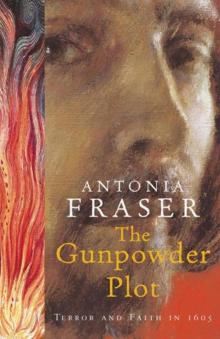 The Gunpowder Plot
The Gunpowder Plot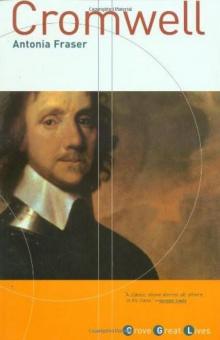 Cromwell
Cromwell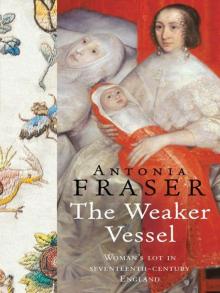 The Weaker Vessel: Women's Lot in Seventeenth-Century England
The Weaker Vessel: Women's Lot in Seventeenth-Century England Marie Antoinette: The Journey
Marie Antoinette: The Journey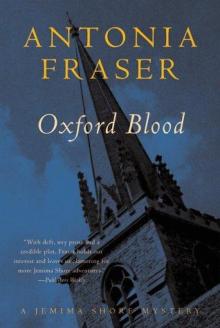 Oxford Blood
Oxford Blood Your Royal Hostage
Your Royal Hostage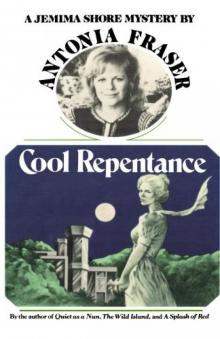 Cool Repentance
Cool Repentance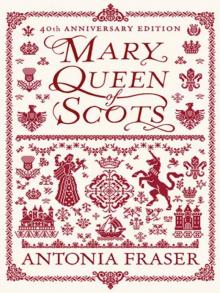 Mary Queen of Scots
Mary Queen of Scots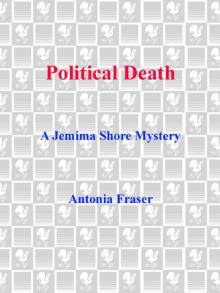 Political Death
Political Death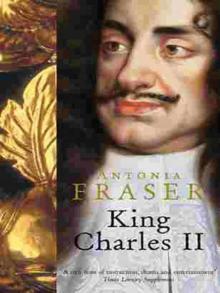 Royal Charles: Charles II and the Restoration
Royal Charles: Charles II and the Restoration My History: A Memoir of Growing Up
My History: A Memoir of Growing Up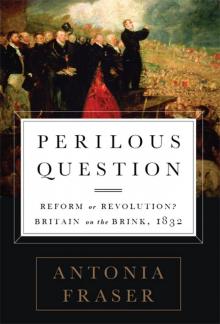 Perilous Question: Reform or Revolution? Britain on the Brink, 1832
Perilous Question: Reform or Revolution? Britain on the Brink, 1832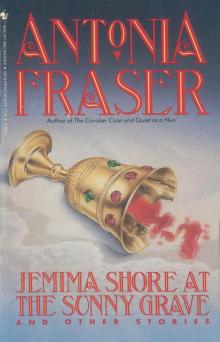 Jemima Shore at the Sunny Grave
Jemima Shore at the Sunny Grave A Splash of Red
A Splash of Red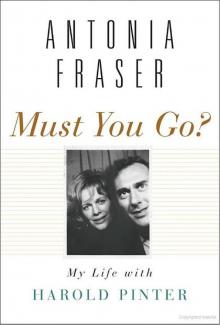 Must You Go?: My Life With Harold Pinter
Must You Go?: My Life With Harold Pinter Love and Louis XIV: The Women in the Life of the Sun King
Love and Louis XIV: The Women in the Life of the Sun King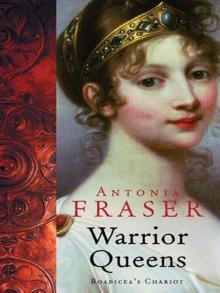 The Warrior Queens
The Warrior Queens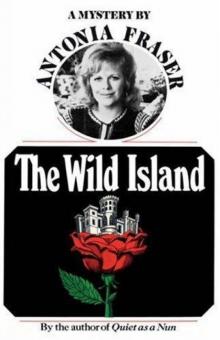 The Wild Island
The Wild Island Quiet as a Nun
Quiet as a Nun Perilous Question
Perilous Question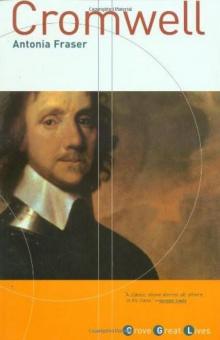 Cromwell, the Lord Protector
Cromwell, the Lord Protector Gunpowder Plots
Gunpowder Plots The Wild Island - Jemima Shore 02
The Wild Island - Jemima Shore 02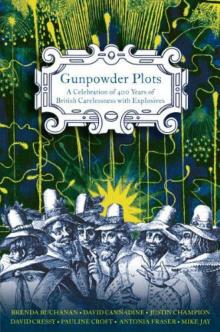 Gunpowder Plots: A Celebration of 400 Years of Bonfire Night
Gunpowder Plots: A Celebration of 400 Years of Bonfire Night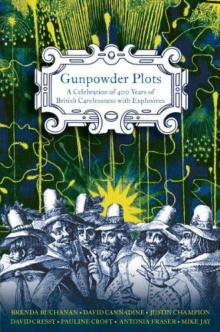 Gunpowder Plots_A Celebration of 400 Years of Bonfire Night
Gunpowder Plots_A Celebration of 400 Years of Bonfire Night Marie Antoinette
Marie Antoinette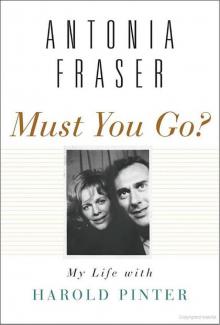 Must You Go?
Must You Go? My History
My History